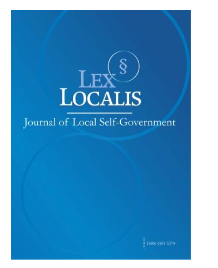THE DARK TRIAD IN PERSONALITY AND ITS RELATIONSHIP WITH ALEXITHYMIA AND EMOTIONAL REGULATION DIFFICULTIES AMONG UNIVERSITY STUDENTS.
DOI:
https://doi.org/10.52152/800495Keywords:
Dark Triad in Personality, Alexithymia, University StudentsAbstract
The study aimed to explore the relationship between the Dark Triad personality traits, alexithymia, and emotional regulation difficulties among university students. The study was conducted on a sample of 258 students, who were assessed by using the Dark Triad personality scale (Adapted and standardized by Karim, 2016), the Toronto Alexithymia Scale (TAS-20) developed by Bagby et al. (1994) and translated into Arabic by Al-Eidan (2019), and the Emotional Regulation Difficulties Scale (brief version) developed by Bjureberg et al. (2016) and translated into Arabic by Abadi et al. (2019). Results shows statistically significant positive correlation between students' scores on the Dark Triad personality scale and their scores on both the alexithymia and emotional regulation difficulties scales. In addition, results found statistically significant positive correlation between students' scores on the Dark Triad personality scale and their scores on both the alexithymia and emotional regulation difficulties scales. Moreover, there was a statistically significant positive correlation found between students' scores on the Dark Triad personality scale and their scores on both the alexithymia and emotional regulation difficulties scales. Also, results illustrate the prediction of Alexithymia in students based on their scores on the Dark Triad personality traits and emotional regulation difficulties scales. Finally, there weren't statistically significant differences found between students' average scores on the Dark Triad, alexithymia, and emotional regulation difficulties scales based on gender, academic specialization, or their interaction.
Downloads
Published
Issue
Section
License
Copyright (c) 2025 Lex localis - Journal of Local Self-Government

This work is licensed under a Creative Commons Attribution-NonCommercial-NoDerivatives 4.0 International License.








